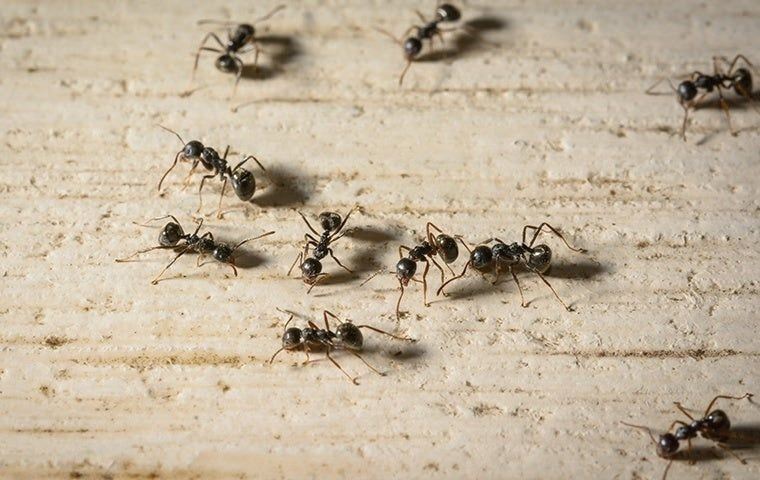
Ant Identification & Prevention
Frequently Asked Questions About Ants
Have questions? We are here to help. Still have questions or can't find the answer you need? Give us a call at 252-424-7966 today!

-
How can I prevent ants in the future?
Prevent problems with ants in Elizabeth City, NC, and surrounding areas by combining our professional services with the following prevention tips:
- Use a caulking gun to seal cracks in the foundation of your home or business.
- Keep tight-fitting or locking lids on outdoor trash cans and compost bins.
- Eliminate excess moisture in and around your property.
- Repair any holes along your roofline.
- Make sure window and door screens are entirely intact.
- Place mesh covers over vents leading into your home or business.
- Cut back overgrown vegetation from the exterior of your home or business.
- Leave a barrier of stone or rock between any soil, grass, or mulch and the foundation.
-
How do I get rid of ants?
Professional home pest control is the best way to eliminate pests and keep them from returning. At Albemarle Termite & Pest Control, our pest management professionals are highly trained and dedicated to providing safe and effective services that are affordable. We are a local, family-owned pest control company whose number one priority is putting our customers first and exceeding their expectations. To eliminate pests from your home or business once and for all, contact Albemarle Termite & Pest Control today!
-
Where will I find ants?Ants are active during the day, traveling back and forth from their nests to food sources. You’ll commonly find ants in lawns, gardens, driveways, walkways, and decks. Some ants, like fire ants, prefer to live outside, while others, like carpenter ants, little black ants, and odorous house ants, regularly nest inside. Ants will nest indoors in secluded locations such as behind walls, inside insulation, under floors, or in crawlspaces. Carpenter ants nest inside structural wood, preferring wood that has been previously damaged by water.
-
Why do I have an ant problem?The most common reason ants have invaded your property is that it is providing them with food to feed their colony. Ants are omnivores and feed on a variety of food such as fruits, vegetables, proteins, and other insects. Foraging ants will leave a chemical pheromone trail that helps lead other members of the colony to the food source. Most species of ants forage for food inside compost bins, trash cans, gardens, and outdoor eating areas. Areas of moisture will also attract ants. If ants are living inside or near your property, it could be a sign of an underlying moisture issue that you need to address.
-
Are ants dangerous?
Most species of ants that live on your property are nuisance pests. Acrobat ants, Argentine ants, odorous house ants, and little black ants are examples of nuisance pests. While not as problematic as other species, nuisance ants should still be eliminated as soon as possible to prevent them from contaminating food and taking over your yard and home.
Examples of dangerous ants that live in our area are the carpenter ants and fire ants. The carpenter ant causes costly structural damage by tunneling through and nesting inside the structural wood of a home or other building. Fire ants are quick to anger and deliver painful stings; the venom they inject triggers allergic reactions in some people. Fire ants are also attracted to electrical equipment and damage things like air conditioners and circuit breakers.
-
What are ants?
Ants are highly social insects that live throughout the world and are some of the most common pests to invade homes and businesses. Their colonies consist of three main castes: queens, workers, and males. Their ability to work together for the greater good of the colony allows them to thrive in a variety of environments. Ants vary significantly in size, behavior, food preferences, and nesting locations, depending on their specific species. However, all ants have a few physical features in common. Ants are insects and have six legs and three distinct body regions consisting of a head, thorax, and abdomen. Ants also have chewing mouthparts, a pair of bent antennae, and a narrow connection between the thorax and the abdomen. Additionally, the reproductive members of the colony have wings.
The most common ant species to invade homes and businesses in our areas of North Carolina and Virginia are listed below.



